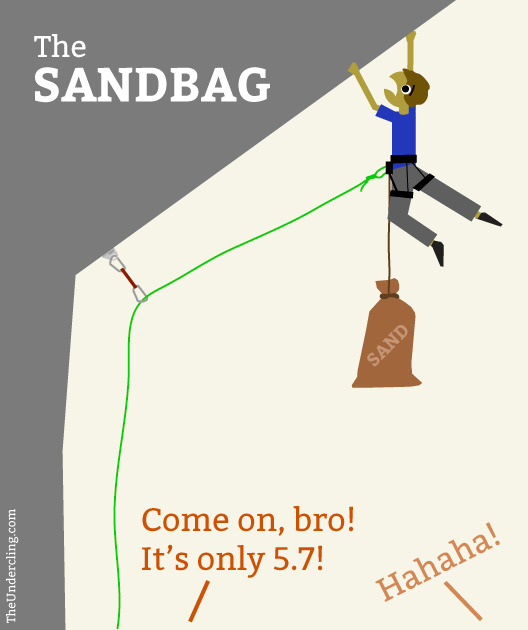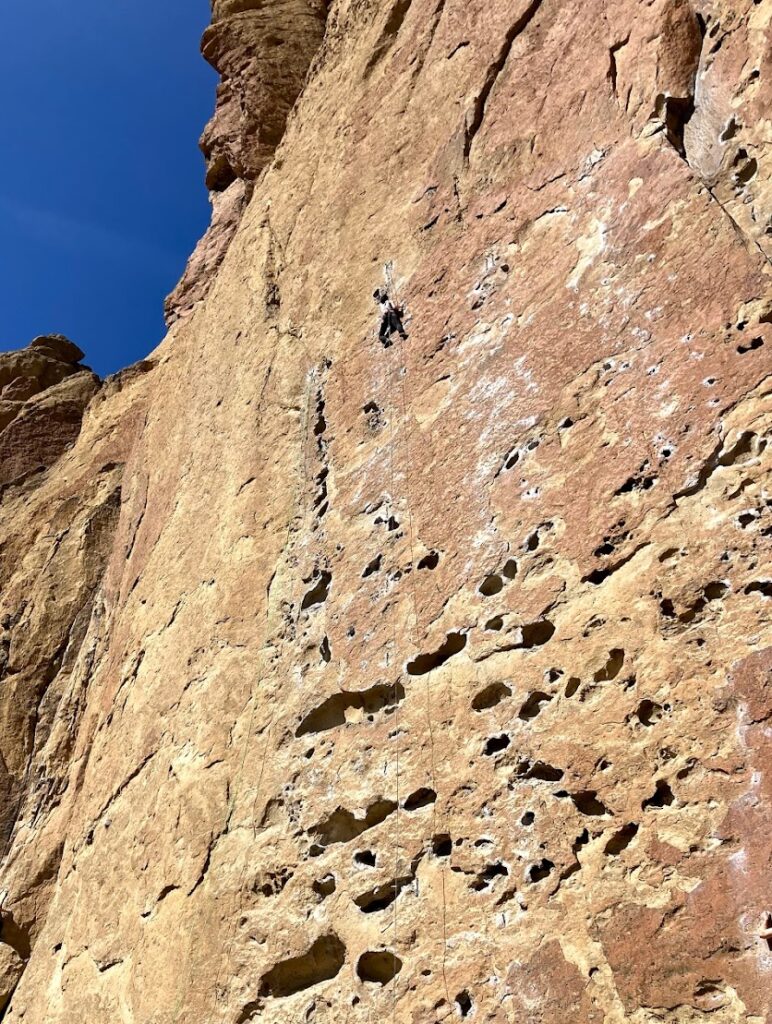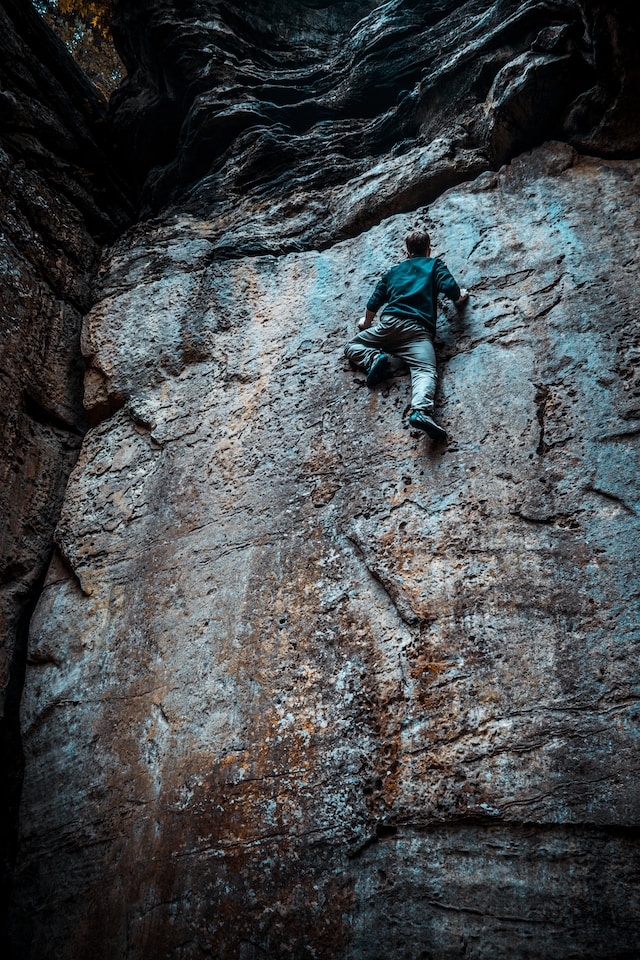Sandbagged & Sandbagging Climbing: 2024 Slang Explained
Last Updated on: 23rd January 2024, 01:41 pm
Chances are you’ve heard someone talk about sandbagging climbing routes. Something like: It’s a sandbagged 5.9. It’s rated 5.11a, but it’s totally sandbagged. I remember that route. It’s a sandbag, for sure. But what is the sandbagging meaning?
It doesn’t matter if you saw it in a guidebook, read it on Mountain Project, or heard someone say it at the crag. In general, the sandbagged meaning is that the route is going to be hard.
Table of Contents
- What is sandbagging climbing?
- Why do routes get sandbagged in rock climbing?
- Is sandbagged slang?
- Examples of sandbagging in climbing
- Is climbing sandbagged routes dangerous
- Wrap up
What is sandbagging climbing?
Sandbagging climbing refers to when routes are much harder than their stated grade. More commonly, someone will refer to a route as being sandbagged. The term comes from implying the route feels like you are climbing it with a sandbag attached to you.

Why do routes get sandbagged in rock climbing?
Often sandbagged climbing comes occurs because the low grade was relative to the area and the period of time when it was bolted.
For instance, the grade 5.9+ is a classic trad sandbag grade. If you see a trad route that is rated 5.9+ and it was put up in the 60s, be afraid. It’ll be hard. It’s not that they are intentional sandbags; it’s just that 5.9+ was the highest grade back in the day, so the hard stuff was rated 5.9+ and it hasn’t been updated.
Routes can also feel sandbagged depending on the area and the types of climbs you are used to. When an area is developed, the grades will be relevant to that crag and it’s unique type of climbing. For instance, a 5.10a on the sharp volcanic rock of Smith Rock in Oregon might feel harder to someone used to climbing the smooth granite around Lake Tahoe in California. Someone used to climbing overhung 5.12s might find themselves flailing on a 5.12 finger crack. Some areas have stiff grades while others are a bit more relaxed — that’s just a part of climbing.
Is sandbagged slang?
In the everyday world, most folks would consider the term sandbagged as slang. But in climbing, most folks wouldn’t consider sandbagged slang. It’s such a normal part of the climbing vocabulary that it is probably more of a staple adjective for a route than a term that could be considered slang.
The term is so popular that it is used around the world. From crags in Europe to North America, when folks are speaking English, you can be sure sandbagged will be something they are saying.
Examples of sandbagging in climbing
In image below, you can see that the routes have massive huecos down low, but thins out up top. Some of the routes go at low to mid 5.10, but require some really challenging movement after the route gets going to reach the anchors or even committing moves low down. Of course after you climb it a couple times, it becomes second nature and doesn’t feel that hard.

Is climbing sandbagged routes dangerous
Sandbags can happen when a guidebook author or route developer wants to have the grim satisfaction of knowing that future parties will struggle on a route. We climbers are a sick bunch. Sometimes it’s best to take a look on mountain project and see what people are saying before you get in over your head.
More than one climber or climbing party has gotten in trouble because they were unprepared for a sandbagged route that was harder or more serious than they initially realized. This can be especially dangerous while learning to place gear trad climbing. If you hop on what you think is an easy route to practice setting your protection with the idea a friend will follow up and check it, you might end up taking a fall on protection you’re not 100% confident in. Note this isn’t necessarily how I recommend learning to trad climb, but people do it.
Sandbagged sport routes are less dangerous, but can pose a threat if there are really challenging moves in the deck zone, or the area where if you fall you’ll hit the ground. It’s good practice to stick clip a route to protect yourself from a ground fall especially if you’ve never climbed a route before. At the bottom of a route you can usually can tell if the first couple moves look like they’ll give you any trouble.
Wrap up
In most cases, climbing a sandbagged routes result in some nervous laughs and at worst, a piece of gear you have to leave on the wall. As a guy that’s been sandbagged before, it can get a little spooky, but usually isn’t dangerous.
If you’re at the bottom of a “5.8” and are looking out at 50-foot roof with no protection, you’ve been sandbagged. Retreat while you still can.

